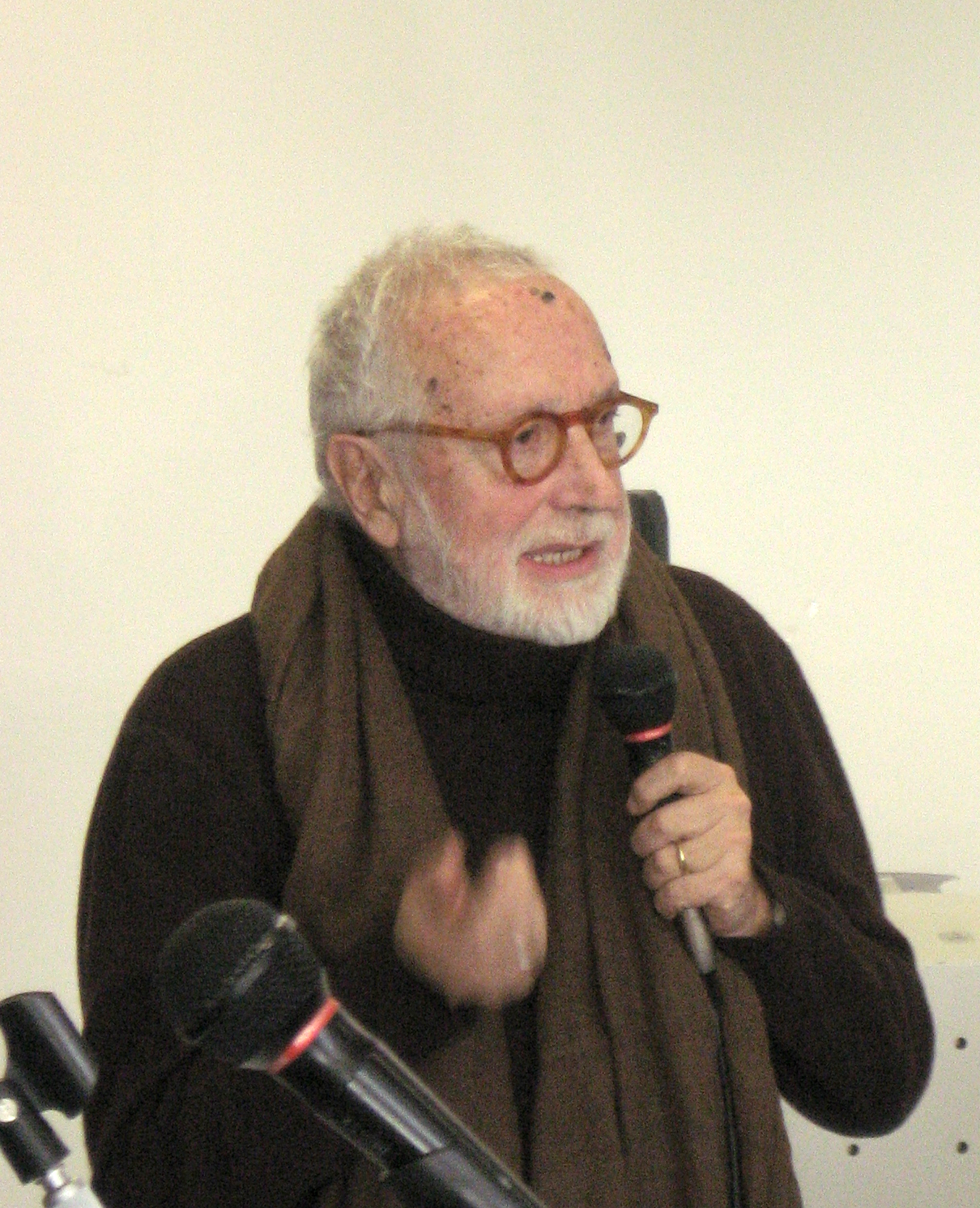|
Dieter Sieger
Dieter Sieger (born 3 May 1938) is a German architect, shipbuilder, industrial designer, painter and art collector. He is one of Germany's most prominent and distinctive contemporary designers. In the 1980s and 1990s, Sieger made history by making stylistic and cultural orientation in the bathroom a key point of his design. He developed several groundbreaking bathroom concepts and products, most notably the single-lever mixer "Domani" (1985) and the cross-handle tap "Tara" (1992) (both Dornbracht). Life Dieter Sieger was born in Münster, the first of two children born to a family of civil servants. He developed a talent for drawing at an early age, but his family showed little understanding. While still at school, Sieger began attending an evening drawing class for adults at the Werkkunstschule Münster. His encounters with other attendees had a lasting influence and opened up new ways of looking at things. In the years that followed, Sieger produced perspective drawings for th ... [...More Info...] [...Related Items...] OR: [Wikipedia] [Google] [Baidu] |
Gallery Owner
An art dealer is a person or company that buys and sells works of art, or acts as the intermediary between the buyers and sellers of art. An art dealer in contemporary art typically seeks out various artists to represent, and builds relationships with collectors and museums whose interests are likely to match the work of the represented artists. Some dealers are able to anticipate market trends, while some prominent dealers may be able to influence the taste of the market. Many dealers specialize in a particular style, period, or region. They often travel internationally, frequenting exhibitions, auctions, and artists' studios looking for good buys, little-known treasures, and exciting new works. When dealers buy works of art, they resell them either in their galleries or directly to collectors. Those who deal in contemporary art in particular usually exhibit artists' works in their own galleries. They will often take part in preparing the works of art to be revealed or processed ... [...More Info...] [...Related Items...] OR: [Wikipedia] [Google] [Baidu] |
Fashion Accessory
In fashion, an accessory is an item used to contribute, in a secondary manner, to an individual's outfit. Accessories are often chosen to complete an outfit and complement the wearer's look. They have the capacity to further express an individual's identity and personality. Accessories come in different shapes, sizes, hues, etc. The term came into use in the 20th century. Types Fashion accessories can be loosely categorized into two general areas: those that are carried and those that are worn. Traditionally carried accessories include purses and handbags, hand fans, parasols and umbrellas, wallets, canes, and ceremonial swords. Accessories that are worn may include jackets, boots and shoes, cravats, ties, hats, bonnets, belts and suspenders, gloves, muffs, necklaces, bracelets, watches, eyewear, sashes, shawls, scarves, lanyards, socks, pins, piercings, rings, and stockings. The type of accessory that an individual chooses to wear or carry to complement their outfi ... [...More Info...] [...Related Items...] OR: [Wikipedia] [Google] [Baidu] |
Lighting
Lighting or illumination is the deliberate use of light to achieve practical or aesthetic effects. Lighting includes the use of both artificial light sources like lamps and light fixtures, as well as natural illumination by capturing daylight. Daylighting (using windows, skylights, or light shelves) is sometimes used as the main source of light during daytime in buildings. This can save energy in place of using artificial lighting, which represents a major component of energy consumption in buildings. Proper lighting can enhance task performance, improve the appearance of an area, or have positive psychological effects on occupants. Indoor lighting is usually accomplished using light fixtures, and is a key part of interior design. Lighting can also be an intrinsic component of landscape projects. History With the discovery of fire, the earliest form of artificial lighting used to illuminate an area were campfires or torches. As early as 400,000 years ago, fire was kindl ... [...More Info...] [...Related Items...] OR: [Wikipedia] [Google] [Baidu] |
Furniture
Furniture refers to movable objects intended to support various human activities such as seating (e.g., stools, chairs, and sofas), eating (tables), storing items, eating and/or working with an item, and sleeping (e.g., beds and hammocks). Furniture is also used to hold objects at a convenient height for work (as horizontal surfaces above the ground, such as tables and desks), or to store things (e.g., cupboards, shelves, and drawers). Furniture can be a product of design and can be considered a form of decorative art. In addition to furniture's functional role, it can serve a symbolic or religious purpose. It can be made from a vast multitude of materials, including metal, plastic, and wood. Furniture can be made using a variety of woodworking joints which often reflects the local culture. People have been using natural objects, such as tree stumps, rocks and moss, as furniture since the beginning of human civilization and continues today in some households/campsites. Ar ... [...More Info...] [...Related Items...] OR: [Wikipedia] [Google] [Baidu] |
Creative Director
A creative director (or creative supervisor) is a person who makes high-level creative decisions and, with those decisions, oversees the creation of creative assets such as advertisements, products, events, or logos. Creative director positions are often found within the television production, graphic design, film, music, video game, fashion, advertising, media, or entertainment industries, but may be found in other creative organizations such as web development and software development firms as well. A creative director is a vital role in all of the arts and entertainment industries and can be seen as another element in any product development process. The creative director may also assume the roles of an art director, copywriter, or lead designer. The responsibilities of a creative director include leading the communication design, interactive design, and concept forward in any work assigned. For example, this responsibility is often seen in industries related to advertisement. T ... [...More Info...] [...Related Items...] OR: [Wikipedia] [Google] [Baidu] |
Managing Director
A chief executive officer (CEO), also known as a central executive officer (CEO), chief administrator officer (CAO) or just chief executive (CE), is one of a number of corporate executives charged with the management of an organization especially an independent legal entity such as a company or nonprofit institution. CEOs find roles in a range of organizations, including public and private corporations, non-profit organizations and even some government organizations (notably state-owned enterprises). The CEO of a corporation or company typically reports to the board of directors and is charged with maximizing the value of the business, which may include maximizing the share price, market share, revenues or another element. In the non-profit and government sector, CEOs typically aim at achieving outcomes related to the organization's mission, usually provided by legislation. CEOs are also frequently assigned the role of main manager of the organization and the highest-ranking offic ... [...More Info...] [...Related Items...] OR: [Wikipedia] [Google] [Baidu] |
Visiting Professor
In academia, a visiting scholar, visiting researcher, visiting fellow, visiting lecturer, or visiting professor is a scholar from an institution who visits a host university to teach, lecture, or perform research on a topic for which the visitor is valued. In many cases the position is not salaried because visitor is salaried by their home institution (or partially salaried, as in some cases of sabbatical leave from US universities). Some visiting positions are salaried. Typically, a visiting scholar may stay for a couple of months or even a year,UT"Visiting Scholar". The University of Texas at Austin. though the stay can be extended. Typically, a visiting scholar is invited by the host institution, and it is not unusual for them to provide accommodation. Such an invitation is often regarded as recognizing the scholar's prominence in the field. Attracting prominent visiting scholars often allows the permanent faculty and graduate students to cooperate with prominent academic ... [...More Info...] [...Related Items...] OR: [Wikipedia] [Google] [Baidu] |
President (corporate Title)
A president is a leader of an organization, company, community, club, trade union, university or other group. The relationship between a president and a chief executive officer varies, depending on the structure of the specific organization. In a similar vein to a chief operating officer, the title of corporate president as a separate position (as opposed to being combined with a "C-suite" designation, such as "president and chief executive officer" or "president and chief operating officer") is also loosely defined; the president is usually the legally recognized highest rank of corporate officer, ranking above the various vice presidents (including senior vice president and executive vice president), but on its own generally considered subordinate, in practice, to the CEO. The powers of a president vary widely across organizations and such powers come from specific authorization in the bylaws like ''Robert's Rules of Order'' (e.g. the president can make an "executive decision" on ... [...More Info...] [...Related Items...] OR: [Wikipedia] [Google] [Baidu] |
Andrea Branzi
Andrea Branzi (, born November 30, 1938) is a Florence-born Italian architect and designer. He currently lives and works in Milan and was a professor and chairman of the School of Interior Design at the Polytechnic University of Milan until 2009. Education and background Studied as an architect at the Florence School of Architecture, Branzi received his degree in 1966 and founded Archizoom Associati with Gilberto Corretti, Paolo Deganello, Massimo Morozzi in 1966 in Florence where they developed the No-Stop City. In 1976, he established Studio Alchimia and in the 1980s began to associate with the Memphis Group. Branzi also served as the cultural director of Domus Academy, Italy’s first postgraduate design school, for its first ten years. His design works are included in permanent collections such as the Centre Georges Pompidou, Paris; the Metropolitan Museum of Art, New York; Museum of Fine Arts Houston, Houston; Museum of Modern Art, New York; Victoria & Albert Museum, London; ... [...More Info...] [...Related Items...] OR: [Wikipedia] [Google] [Baidu] |
Osnabrück
Osnabrück (; wep, Ossenbrügge; archaic ''Osnaburg'') is a city in the German state of Lower Saxony. It is situated on the river Hase in a valley penned between the Wiehen Hills and the northern tip of the Teutoburg Forest. With a population of 168,145 Osnabrück is one of the four largest cities in Lower Saxony. The city is the centrepoint of the Osnabrück Land region as well as the District of Osnabrück.Osnabrück: Lebendiges Zentrum im Osnabrücker Land www.osnabruecker-land.de The founding of Osnabrück was linked to its positioning on important European trading routes. |
Ettore Sottsass
Ettore Sottsass (Innsbruck, Austria 14 September 1917 – Milan, Italy 31 December 2007) was a 20th century Italian architect, noted for also designing furniture, jewellery, glass, lighting, home and office wares, as well as numerous buildings and interiors — often defined by bold colours. Early life Sottsass was born in Innsbruck, Austria, and grew up in Turin, where his father, also named Ettore Sottsass, was an architect. The elder Sottsass belonged to the modernist architecture group Movimento Italiano per l'Architectura Razionale (MIAR), which was led by Giuseppe Pagano. The younger Sottsass was educated at the Politecnico di Torino in Turin and graduated in 1939 with a degree in architecture. After the invasion of Italy by the Anglo-Americans, Sottsass enlisted in the Monterosa Division, a division of the Repubblica Sociale Italiana led by Benito Mussolini and his Republican Fascist Party, to fight in the mountains alongside Hitler's army (Sottsass tells his adve ... [...More Info...] [...Related Items...] OR: [Wikipedia] [Google] [Baidu] |






